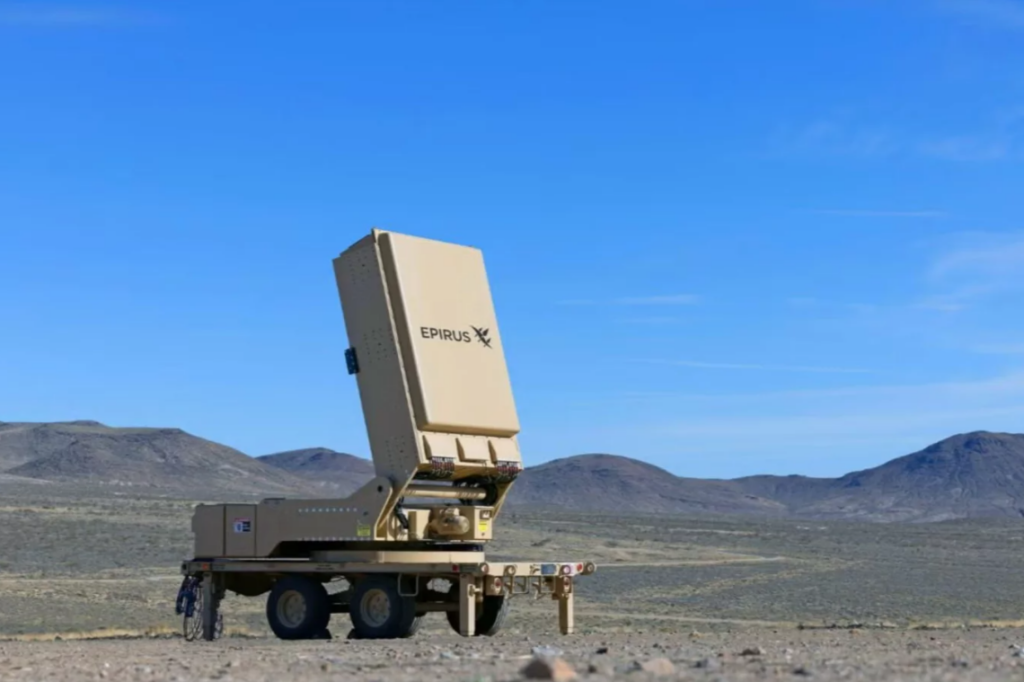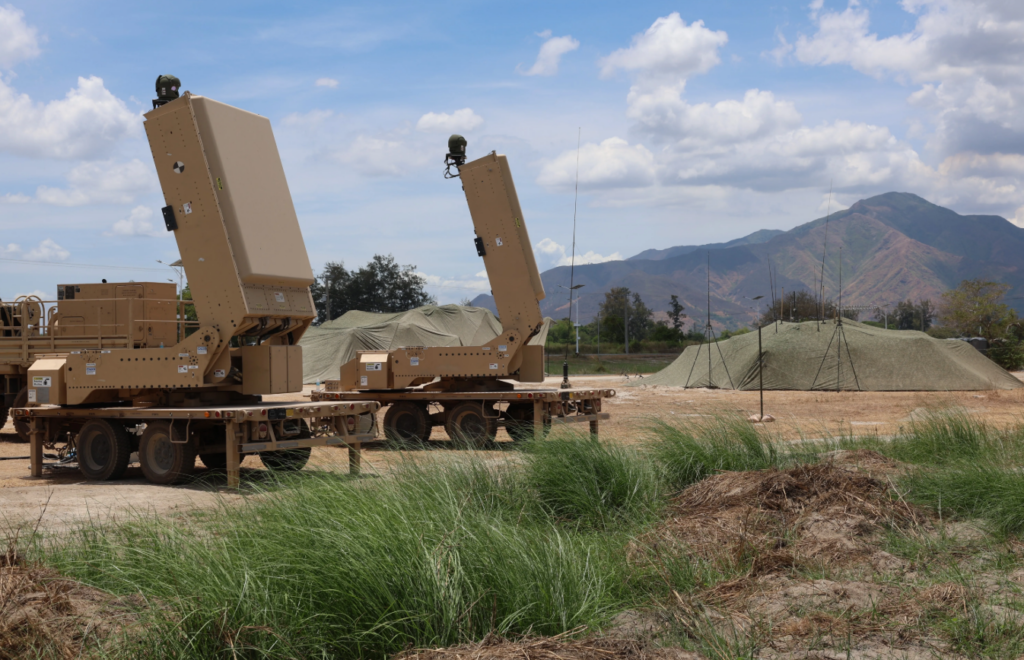Epirus Leonidas System Disables 49-Drone Swarm in Successful Test
On August 28, U.S. Army observers at Camp Atterbury in Indiana witnessed Epirus’ Leonidas directed-energy weapon disable an entire swarm of 49 quadcopter drones in seconds. The Leonidas system (a high-power microwave (HPM) anti-drone system) fired a wide-area pulse of electromagnetic energy that knocked out the onboard electronics of every UAV simultaneously. Epirus CEO Andy Lowery called the event a “singularity event,” noting afterward that this capability will be needed “at stadiums and airports” to protect civilians from hostile drone swarms. This marked the largest live test for Leonidas to date, with 49 small quadcopter drones similar to commercial quadcopters falling out of the sky almost instantaneously.

The Leonidas system works by projecting a focused beam of long-pulse microwaves across a wide angle, essentially frying drone electronics in mid-flight. As a directed energy weapon, it creates a “force field” of electromagnetic interference, disabling multiple targets at once without projectiles or lasers. Unlike a laser, which must aim at one drone at a time, Leonidas can blanket a 60-degree volume of air. Army reports note that Leonidas’ solid-state microwave transmitters allow it to sustain this beam for as long as it has power, and its software can even discriminate enemy drones from friendly aircraft. The system is being developed under the U.S. Army’s IFPC-HPM (Indirect Fire Protection Capability – High-Power Microwave) program, with both fixed and vehicle-mounted versions ready for testing. Epirus’ Leonidas delivers a scalable, electronic countermeasure: any drone flying through its area of effect has its electronics fried and control lost, causing it to crash safely to the ground.
The success of this test underscores a shift in modern defense technology towards layered, non-kinetic defenses against cheap drone swarms. Small drones pose a growing security challenge because they can overwhelm conventional defenses when attacking in large numbers, which is why the Army sees value in microwave systems like Leonidas. By neutralizing 49 UAVs in one burst, Leonidas demonstrated how a single directed-energy salvo can replace dozens of expensive interceptor missiles or guns. Microwave-based systems could soon protect forward troops, bases, or even public events from coordinated drone attacks. The Epirus Leonidas system embodies cutting-edge directed energy weapon technology and marks a significant step forward in anti-drone defense, with wide-ranging implications for battlefield and homeland security against unmanned swarm threats.

